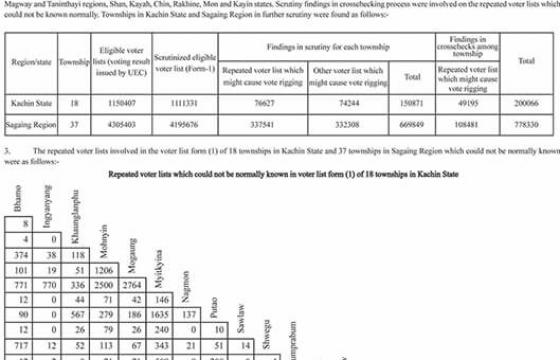Lately following the recent meeting between the Nationwide Ceasefire Agreement (NCA) signatory 8 Ethnic Armed Organizations (EAOs) and Aung San Suu Kyi, de facto leader of the National League for Democracy (NLD) regime, her likely misinterpretation of Panglong Agreement seems to be disturbing quite a lot of ethnic nationalities’ minds.
Suu Kyi’s spokesman Zaw Htay was telling the press about “secession minus 21 Century Panglong Conference” and that his boss has explained the necessity of secession clause – ingrained in 1947 Union of Burma Constitution – was brought in, on 12 February1947 celebrated as Union Day since then, at the demand of non-Bamar ethnic nationalities to ensure that they would not be overwhelmed by the Bamar majority as a guarantee, and in no way should be seen as a treaty between ethnic groups or states, but only as an instrument to gain speedy independence from the British.
This argument whether it is true or not needs to be scrutinized, so that the crucial basic concept regarding Panglong Agreement could be agreed upon, before embarking on the national reconciliation path, which is filled with hindrances, booby traps and political manoeuvring, so to speak.
Firstly, it should be noted that Panglong Agreement is being accepted and understood as a treaty between Bamar state and other non-Bamar ethnic states, which has been the basis of legal cooperation to form the Union of Burma in 1948.
Shan State Progress Party/Shan State Army (SSPP/SSA) Vice-Chairman Sao Hkun Hseng equated the Panglong treaty with the liking of United Nations Charter, which cannot be altered, in his recent interview with the Democratic Voice of Burma.
As such, if the Bamar leadership seeks to nullify it in any way, the legal binding of states between states will be violated and that would spell the end of any voluntary cooperation to exist as a unified country or state.
Secondly, the successive military regimes continuous efforts to rewrite the interpretation of the treaty is well known to the ethnic nationalities. And that is the notion of Bamar being the traditional ruler of all the ethnic nationalities and with the British withdrawal as a colonial power, it’s mantle has been retaken by the Bamar leadership again. In other words, the non-Bamar ethnic territories have been owned by the Bamar kings, since ancient times.
With such traditional claims the Bamar political elite, including the military starts to embark on a twisted logic of reinterpretation of Panglong Agreement of 1947.
The analogy is that the treaty is like dismantling the scaffolding after the building of a “Chedi” in Thai, “Zedi” in Burmese, or “Stupa” – a mound-like or hemispherical structure containing relics, typically the remains of Buddhist monks or nuns, and used as a place of meditation – is finished.
But the problem is the ethnic nationalities see the treaty as being a Stupa, a permanent structure, and not at all as a supporting structure.
The cardinal question now is if the NLD and Suu Kyi adhere to such a Bamar ethnocentric way of interpretation regarding Panglong Agreement. If it is a big “YES”, we all will be back to square one and a very long, long struggle ahead of us. This, in turn, would lead us to ponder on other options than only relying on Suu Kyi’s good will and understanding, to achieve our rights of self-determination and other political aspirations that have been denied and robbed from all of us.
Let us hope that this is not really the case.






